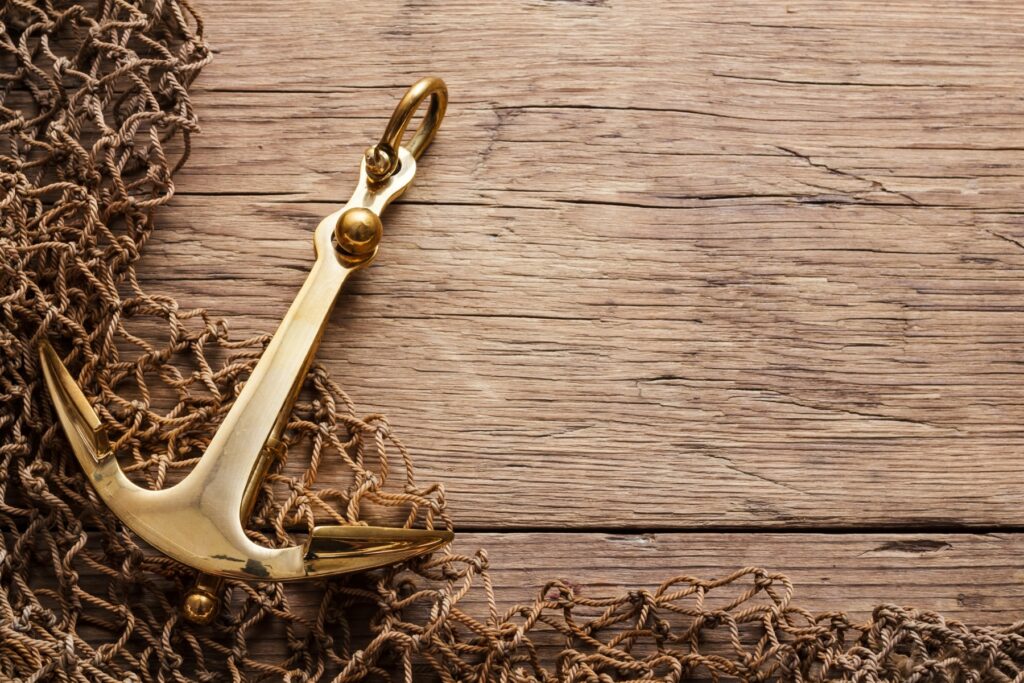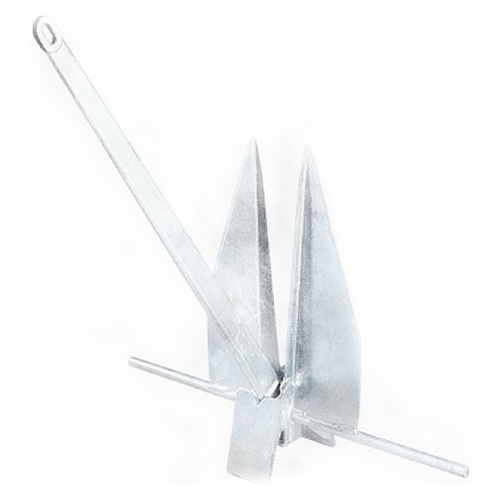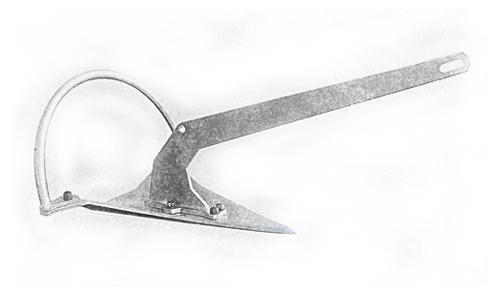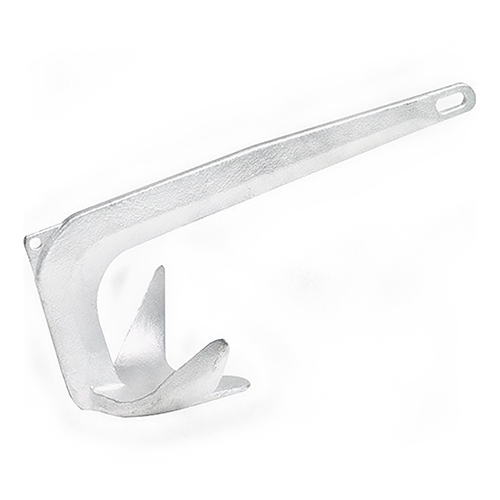
Houseboats are more popular than ever, but one problem this genre of boat faces is the challenge of selecting a good houseboat anchor. Houseboat anchors need to be heavy enough to hold boats in place; lightweight anchors lack the capability and strength needed for a boat of that size.
Choosing the right anchor for your houseboat can be a daunting task, but with a little research, you’ll be able to find the perfect option for your needs.
In this article, we will discuss what type of anchors are used for houseboats and how to choose the right one for each type of boat or trip. We will also provide tips for different types of water body bottom so it works efficiently and safely.
Table of Contents
What is the Purpose of Houseboat Anchors?
Anchoring is a common way to keep your vessel moored to the bed of the water body when you are sailing. It can be performed by tying off the bow cleat with nylon rope and chain, then anchoring off the stern cleat, and finally, making a point.
Houseboat anchors are used for many purposes, including safety, stability, and holding your houseboat in place. You can find an assortment of anchor types in the market.
For example, when going through rocks or reefs, you need to choose a suitable type of anchor as they have better holding power over others. It’s a good idea to keep having at least two different types of anchors to ensure you are covered for most bottom types.
Also, consider getting a windlass for your houseboat as well for easier anchoring.
Pros and Cons of Each Type of Anchor
It’s important to know the difference between different kinds of anchors, so you can choose the best one for your boat. The good news is that they are easy to find and inexpensive. So you should have no problem getting one.
The most common anchors used on pleasure boats are the fluke and plow anchors, but there are also other different types of anchors. The best types of anchors for your houseboat are the ones that work well with the bottom type and depth of the water. The efficacy is mainly influenced by the anchor designs and weight.
While it’s good to know which anchors will work in a given situation, it’s also important to know which anchors will work better for you and your houseboat.
Here are 5 of the best types of houseboat anchors, and the pros and cons of each one.
Fluke/Danforth Anchor

| Vessel Length (LOA) ft | Anchor Weight (lbs) |
| 8′ – 16′ | 4 lbs |
| 15′ – 25′ | 8 lbs |
| 26′ – 36′ | 16 lbs |
| 32′ – 38′ | 22 lbs |
| 37′ – 43′ | 33 lbs |
| 42′ – 49′ | 44 lbs |
A fluke anchor is considered the most popular and versatile type of houseboat anchor. Usually favored by small recreational boats or spare anchors due to their lightweight, durability, and ability to fold.
If is it set properly, the pointed part of the fluke burrows itself in the sand or soft mud giving it high holding power. It is typically made from aluminum it is best used in shallow waters where mud and sand are present. But you probably wouldn’t want to use it for other sea beds like cobblestone bottom.
The downside is that it may have a chance to dislodge with the wind direction changes.
Plow/CQR Anchor

| Vessel Length (LOA) ft | Anchor Weight (lbs) |
| 22′ – 26′ | 26 lbs |
| 27′ – 32′ | 35 lbs |
| 33′ – 50′ | 48.5 lbs |
| 51′ – 65′ | 59.5 lbs |
A plow anchor is a heavier, more robust anchor designed for use in deeper water. These anchors can be used on all types of vessels including houseboats. They are made from heavy gauge stainless steel, making them strong and durable.
Beginners are fond of the ease to release when needed and also auto resets when the water current and wind conditions change direction. The only downside to this anchor is the odd shape that makes it harder to stow and carry. But, special adapters can be bought to mount it on a deck.
This type of anchor is commonly seen at the marina due to its low cost and very high holding power. This anchor provides the highest holding power per pound of any anchor in the list and generally performs well in most sea bottoms except rocky ones.
Scoop Anchor

| Vessel Length (LOA) ft | Anchor Weight (lbs) |
| 13′ – 20′ | 9 lbs |
| 16′ – 26′ | 13 lbs |
| 23′ – 36′ | 22 lbs |
| 26′ – 39′ | 33 lbs |
| 30′ – 46′ | 44 lbs |
| 33′ – 52′ | 55 lbs |
| 36′ – 66′ | 73 lbs |
The scoop is a wedge-shaped anchor with a long handle. It was originally designed to be used in waters deeper than a plow or fluke anchor. The scoop is now popular for use on a wide variety of boats and is one of the most versatile anchors available.
The scoop anchor has become popular because it is not only very effective at holding the boat in place, but also easy to deploy, retrieve and store. The scoop can also be used on smaller boats where the anchor is not as heavy as a plow or fluke anchor.
This top bar design also makes it easy to keep the anchor in the correct orientation, with the spade facing down. As the name suggests, the anchor has a scoop on the end and can easily wedge in most sea bottom types, other than rocky ones.
Claw/Bruce Anchor

| Vessel Length (LOA) ft | Anchor Weight (lbs) |
| 13′ – 22′ | 6 lbs |
| 18′ – 25′ | 11 lbs |
| 22′ – 34′ | 16 lbs |
| 25′ – 35′ | 22 lbs |
| 30′ – 40′ | 33 lbs |
| 35′ – 50′ | 44 lbs |
| 39′ – 55′ | 55 lbs |
| 40′ – 60′ | 66 lbs |
A claw anchor is a larger anchor with a toe and 2 curved ends. It is usually made of stainless steel and has a strong grip. This type of anchor is the least expensive option of all the anchors listed. Its main characteristic is its heavyweight.
However, they are not recommended for beginners because they are harder to stow on the boat, and it requires more time to release.
It is best used for rocky bottom like coral, rock, or mud which benefit the claw-shaped anchor. But, its durability and holding power make it a great choice for an overnight stay.
Mushroom Anchor

| Vessel Length (LOA) ft | Anchor Weight (lbs) |
| Up to 10′ | 25 lbs |
| 10′ – 14′ | 50 lbs |
| 14′ – 16′ | 75 lbs |
| 16′ – 18′ | 100 lbs |
| 18′ – 20′ | 150 lbs |
| 20′ – 24′ | 200 lbs |
| 24′ – 29′ | 250 lbs |
I bet you already know what it will look like. This type of anchor is like a huge, mushroom-shaped anchor. It is made of hard, durable material, and has a good grip on the sand and mud. It also has great holding power if there are good sediments deposits over it, provided if you have a large mushroom.
This type of anchor is so much heavier compared to the other anchors for it to have a strong hold.
Common Bottom Types
You should know the different types of bottoms you’ll encounter in your boat. Knowing what kind of bottom you are going to encounter will help you decide what kind of anchor to use.
Sand/Clay/Mud
These are common types of bottoms you’ll encounter. One of the most forgiving bottoms for most types of anchors. Because it is soft and consistent it does not damage anchors but takes a little more time to set.
It is also a good type of bottom to anchor on due to the consistency of the sand which offers high holding power.
Coral/Rock
Coral is another common type of bottom found in many parts of the world. Coral is harder than sand and it damages anchors, but it is a good bottom to anchor on if you are going to be anchored for a long time.
A crucial thing to note, establishing the location where you drop your anchor is your top priority will determine the holding power.
Grass, shale
Generally, seagrass is soft and does not hold anchors well. It is recommended to only anchor on grass when it is calm and flat. Grass anchors also require more time to set and it requires anchors to dig in deeper for a right holding power as well as avoiding false settings.
| Anchor | Bottom |
| Fluke | Sand, mud, clay |
| Plow | Grass, Shale |
| Scoop | Sand, mud, clay, rock, coral |
| Claw | Most bottom type suitable |
| Mushroom | Sand, Mud (For temporary holding) |
How to Choose an Anchor?
Now that you have familiarized yourself with the anchor type and sea beds, follow these criteria to select your anchor:
- You need to know the size of your houseboat to select the anchor weight. For a specific vessel length, the weight of the anchor for each type of anchor differs as shown in the table above. Sizing your anchor optimally is the best in terms of cost and functionality and under-sizing can be a big problem. So, if you’re unsure, consult a professional or choose a larger and heavier one.
- Find out what water bottom you will be dropping your anchor on. Hanging an unsuitable anchor is as good as not anchoring at all.
- Decide on the anchor material. The 3 commonly used materials are galvanized steel, stainless steel, and aluminum. Aluminum generally is less strong than the other 2 options but the tradeoff is its lighter weight. Most boaters choose either a galvanized steel or stainless steel anchor, which has the added advantage of having high tensile strength.
Final Note
If you’re not sure what type is best for your vessel, it’s always best to consult an expert or buy an anchor specifically designed for your houseboat.
Anchors are important tools in boating. They are used to anchor a boat, and they act as the anchor point for mooring lines. They help the boat stay on its intended course and ensure that the boat can remain a stable unit. If you are interested to find out how to set your anchor for different water depths, check out this post here.
Boats have their design specifications and it is important to keep them in mind when choosing an anchor. Your houseboat is no exception if you often go cruising. Anchors must have certain strengths and weaknesses; if you don’t know what to expect from them, you might end up being disappointed.
I hope you now have the information to help you choose an anchor for your boat.

